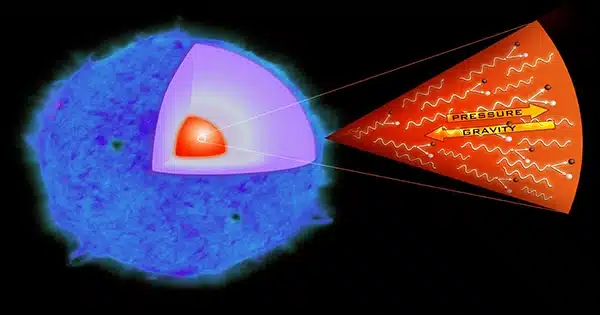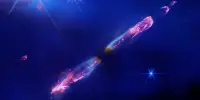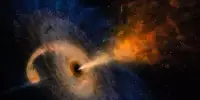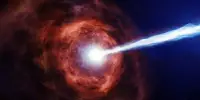Understanding how whirling, ring-shaped disturbances, known as vortex rings, form could aid nuclear fusion researchers in compressing fuel more efficiently, bringing it closer to being a viable energy source.
The model developed by the University of Michigan researchers could aid in the construction of the fuel capsule, limiting the energy lost while attempting to trigger the reaction that causes stars to glow. Furthermore, the model could aid other engineers who must handle fluid mixing after a shock wave goes through, such as those developing supersonic jet engines, as well as physicists studying supernovae.
“These vortex rings move inward during fusion implosions, disrupting the stability of the burning fusion fuel and reducing the efficiency of the reaction,” said Michael Wadas, a doctoral student in mechanical engineering at the University of Michigan and the study’s corresponding author. “These vortex rings move outward from the collapsing star, populating the universe with the materials that will eventually become nebulae, planets, and even new stars.”
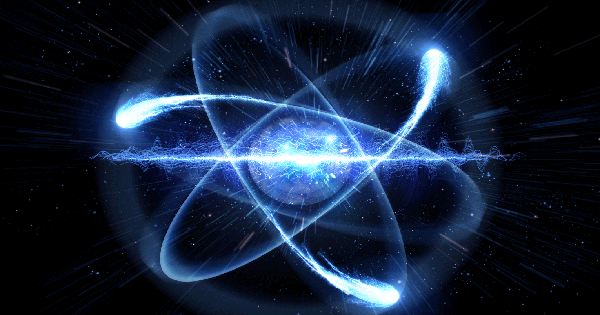
“Our research can help scientists understand some of the most extreme events in the universe and bring humanity one step closer to capturing the power of nuclear fusion as an energy source,” he added. “Our research, which elucidates how such vortex rings form, can help scientists understand some of the most extreme events in the universe.”
Atoms are pushed together until they fuse in nuclear fusion. This process generates many times more energy than fission, which is used to fuel today’s nuclear facilities. Researchers can achieve this reaction by fusing forms of hydrogen into helium, but much of the energy consumed in the process is now squandered.
Part of the issue is that the fuel cannot be crushed neatly. Instabilities cause jets to form that penetrate the hotspot, and fuel bursts out between them—Wadas compared it to squeezing an orange with your hands, and how juice leaks out between your fingers.
The researchers have demonstrated that the vortex rings that emerge at the leading edge of these jets are mathematically comparable to smoke rings, the eddies behind jellyfish, and the plasma rings that leave the surface of a supernova.
A spherical array of lasers aimed toward a fuel capsule in the shape of a sphere is perhaps the most well-known method of fusion. At the National Ignition Facility, which has recently set numerous energy production records, experiments are set up in this manner.
The laser energy vaporizes the layer of material surrounding the fuel, resulting in a virtually flawless, lab-grown shell of diamond in the current record-setter in December 2022. When that shell vaporizes, the carbon atoms fly outward, driving the fuel inward. This causes a shockwave, which pushes the fuel so strongly that it ignites.
While the spherical fuel pellets are among the most flawlessly round items ever created by humans, each contains a design flaw: a fill tube through which the fuel enters. This, like a straw trapped in a smashed orange, is the most likely location for a vortex-ring-led jet to form when compression begins, according to the researchers.
As an associate professor of mechanical engineering at the University of Michigan, Eric Johnsen oversaw the work. “Fusion experiments happen so fast that we really only have to delay the formation of the jet for a few nanoseconds,” he said.
The work combined the nuclear and plasma physics knowledge of Carolyn Kuranz, an associate professor of nuclear engineering and radiological sciences, with the fluid mechanic experience of Wadas and Johnsen.
Many studies have pointed to similar formations in high-energy-density physics, but Wadas claims that they haven’t been specifically characterized as vortex rings.
Knowing about the extensive body of study into the structures observed in fusion experiments and astrophysical observations, Wadas and Johnsen were able to build on and enhance that existing knowledge rather than attempting to characterize them as whole new features.
Johnsen is particularly intrigued by the prospect that vortex rings could aid in the mixing of heavy and lighter elements when stars explode, as some sort of mixing process must have occurred to form the composition of planets such as Earth.
The model can also aid researchers in understanding the maximum amount of energy that a vortex ring can hold as well as the maximum amount of fluid that can be pushed before the flow turns turbulent and becomes more challenging to model. The team is currently conducting studies to validate the vortex ring model.
